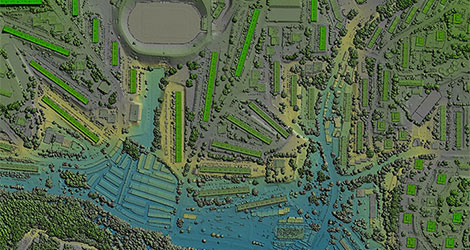On the third day of the GeoSmart India 2023 conference, a session on discussing the geospatial strategy for the mining sector was convened. The session witnessed a congregation of mining sector experts from both government and private industry alike.
The discussions revolved around the importance of geospatial policies, technology, and their implementation for enhancing the mining sector in India, as well as, safeguarding the interest of the general public. Sanjay Chakraborty, Head Technology, Adani Natural Resources chaired the session and discussed the various facets of the mining sector and the role geospatial technologies can and should play for better serving the industry.
While talking about the human interest, and the discomfort of resettling local people near a mine, Sanjay said “From bidding to getting the block, the biggest hurdle starts with the challenge of land. To rehabilitate the people and acquire the land, we need accurate maps. We struggle with cadastral map that are not accurate but we get around it by mapping the area manually.”
His remark sparked a general notion amongst the panelists who shared their views on the subject while offering solutions.
Neeraj Gurjar, Director, Geodetic and Research Branch, Survey of India shed light on the efforts of the government to mitigate this problem. He said, “The government of India recently launched the SVAMITVA project which is establishing accurate maps of more than 1 lakh villages which will prove to be a big boost to the development of cadastral maps. Earlier, there were no record of ownership in villages due to which the local population had land conflicts which resulted into further problem, but with SVAMITVA, that is being curbed.”
He also reiterated the efforts of many state governments who are working on modernizing cadastral maps which can help the mining sector greatly. “But we have to keep in mind that India is a very big country and we do not enjoy the resources that other big countries have and yet we are making considerable strides in the right direction.”
We also see that there is not enough data sharing between sectors for the greater good. These data are collected enabling and when the need to share data arises a lot of things are lost in translation. That needs to be figured out as well to ensure the smooth development of things.
While talking about the technology and data aspect of the mining sector, Dr. Satarupa Kapoor, Institutional Business Development, South Asia Region, Trimble said, “When we talk about the mining sector, planning is essential and it needs a lot of data. The sourcing of data should be smooth. This brings the need for a common data platform, which can make the entire workflow very easy and efficient.”
She further stated that Trimble is working with public and private companies to provide mine monitoring, planning, and estimation solutions wherein core mining parts can be continuously monitored through IoT.
Talking about the roadblocks of the Indian mining sector and the adoption of technology, she said, “When we are using technology, it should be implemented phase-wise to ensure maximum efficiency. It should be planned at the scratch level. As a tech provider, another problem we are facing is that it is not being synchronized used everywhere.”
Dr Ashutosh Roul, General Manager (Mines), National Aluminium Company Limited (NALCO), explained the benefits of drone technology in the mining sector. He said, “Drones have the capability to provide high accuracy of measurement, accurate stockpile data, faster surveys with low cost, and identify hazards and mitigate them.”
He also said that maps can improve worker and site management as it requires only one or two persons to manage the entire survey.
Comparing India with other huge nations, Debkumar Bhattacharyya, Deputy Director General, Geological Survey of India explained “In UK, Australia, Canada, mining is a sort of a monolith. They have a strong favorable policy, which streamlines a lot of work for the mining professionals there. Traditionally, India has lacked that kind of substantial policies but through the national geospatial policy, it encourages the participation of private companies.”
“Inter-ministerial collaboration and cooperation is being taking place. There is also a policy in the works that would increase the interoperability between different government stakeholders,” he added.









